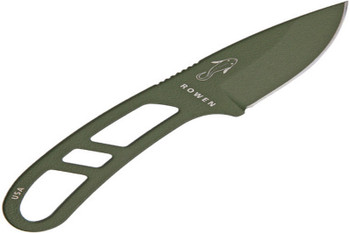Best Blades for Winter Hunting
Posted by Clayton on Jul 27th 2017
If you are a hunter, you need a knife. Whether you use it for skinning your prey, cutting up the meat, as a functional tool around camp, or for all three purposes, a knife is an essential part of your kit.
The type of knife you use for winter hunting requires you to balance the various features of the different types of knives available and your winter hunting habits.Larger knives provide you with better leverage, and smaller knives can help you perform more delicate tasks. You may find a folding knife works best instead of a fixed blade.
You need to ask yourself a few questions and learn more about the various types and styles of knives before you decide which one is best for your winter hunting requirements.
Uses of a Winter Hunting Knife
Determining the use of your winter hunting knife is the first thing you need to ask yourself. If you intend on hunting deer and want to field dress the animal, then certain blades may be better than others.
Perhaps, however, you need a multipurpose knife that you will use around your campsite in addition to performing certain skinning or butchering tasks. You may even want a knife with a few multi-tool features to assist with setups and possible equipment repairs.
This could mean you may want to acquire two blades: one for camp and one specifically to use when you bag your prey.
Typical Uses
There are four primary uses of a good winter hunting knife for game, excluding what most would consider the secondary use of a blade around camp:
Skinning
Most skinning knives have a short, curved blade. This allows you to cut through the animal’s skin without tearing the muscles or the flesh and tissue around the abdomen.
Butchering
Assuming you want to cut up the game for your freezer, you need a knife that can make nice, clean cuts.
Gutting
To preserve the meat, you must remove the internal organs. Some knives have a gut hook that will simplify the process.
Deboning
Your knife should handle removing the meat from the bone after the animal is gutted and skinned.
Types of Winter Hunting Blades
Fixed Blades
Many fixed blade knives may look formidable in the movies, but, for winter hunting, they do not work very well. A nine-inch blade bowie knife, for example, won’t help much when you are trying to dress a deer, although a larger knife might be useful as a backup survival piece.
You should consider a smaller knife with about a four-inch blade and a drop point.
Drop points have sharp edges but a slightly thicker tip. For deer and other large winter game, you don’t need a sharp tip to skin the animal. A thicker tip is also more durable and won’t break as easily when field dressing.
Fixed blades are stronger since the metal of the blade extends into the handle. Without any moving parts, fixed blades are much more reliable and easier to clean.
A fixed blade, however, is not as easy to carry as a folding knife since it requires a sheath and can’t be carried in your pocket. Affixing it to your belt or backpack is less safe and can get in the way.
Folding Blades
Folding knives are very convenient. These types of knives may require more effort to clean, such as removing hair or other material out of the inside, but the other qualities balance out this minor hassle.
Practically speaking, you won’t use a knife that often for dressing game but, instead, likely will use it more around the camp. This tends to argue the point of carrying a folding blade during your winter hunting trips.
The chief downside of a folding blade, compared to a fixed blade, is a folding blade is not as durable.
Blade Length
Shorter blades are easier to control. A longer blade, though, has more reach. Anything greater than about six inches can get in your way when dealing with game.
Type of Steel
The most popular type of steel that provides great durability and sharpens easily is 154cm. You can get stainless steel or non-stainless-steel versions. Knives with greater than 12% chromium are stainless.
Other optimal steels for winter hunting are ATS34, 440C, VG-10, and D2.
A D2 blade is considered “semi-stainless,” as it has slightly less than 12% chromium. These knives can make excellent hunting blades, too.
Final Word
Your personal preference will ultimately determine which knife works best for you. By considering all the factors listed here, you can make an informed choice.

